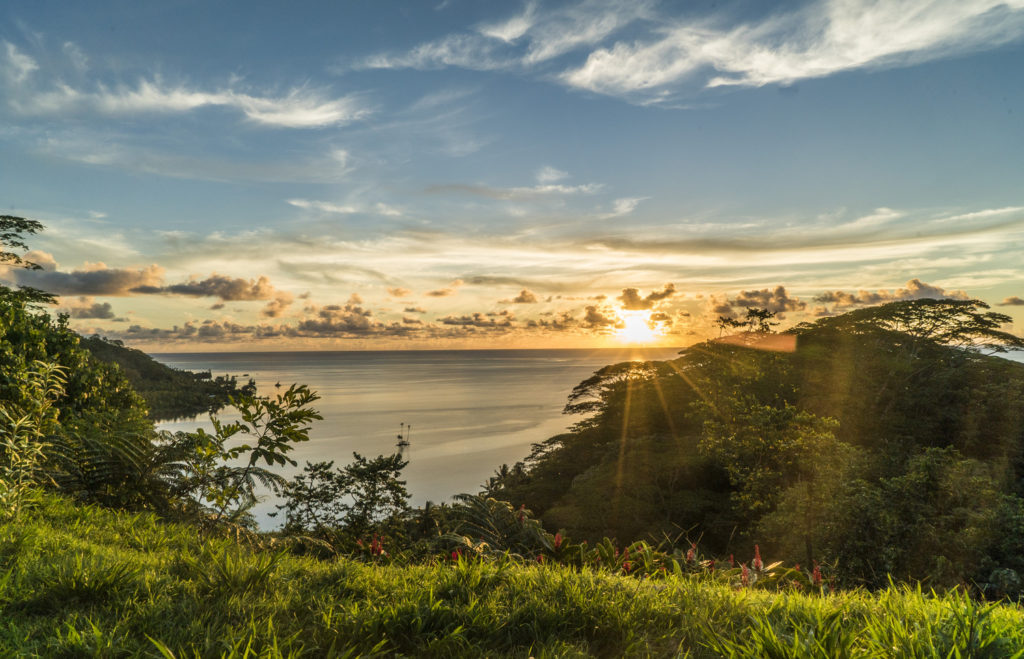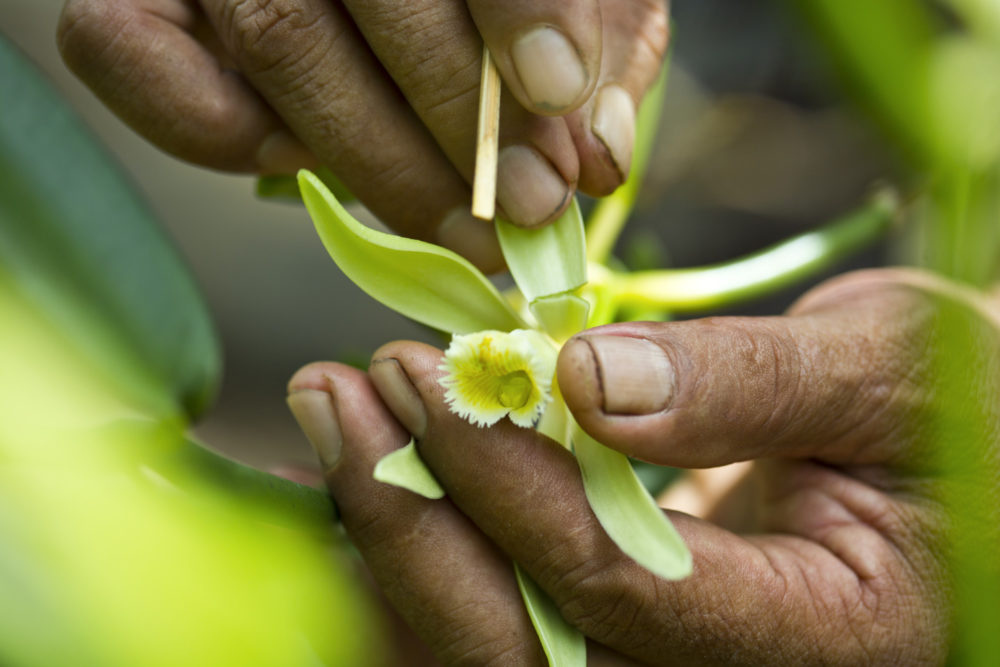Raiatea: la belle île polynésienne

07/10/2022
Autrefois nommée Havai’i Nui, l’île de Raiatea en Polynésie Française a une signification particulière dans la vie des Polynésiens.
Moins connue que Bora Bora, Raiatea est la deuxième plus grande île de l’archipel de la Société et est considérée comme le berceau de la civilisation Maori et de ses ancêtres. Raiatea a probablement été le point de départ des premières grandes migrations vers les îles d’Hawaï, de la Nouvelle Zélande et d’autres contrées de la Polynésie.
Raiatea est également une incroyable source d’intérêt pour les scientifiques et les amoureux de la nature en raison de ses rares espèces animales et végétales. Le mont Temehani abrite la Tiare Apetahi (et une trentaine d’autres plantes endémiques), une fleur que l’on ne trouve nulle part ailleurs dans le monde.
Avec un demi-cercle de pétales blancs, cette fleur délicate qui ne s’épanouit qu’à l’aube est devenue le symbole de Raiatea.
Où se trouve Raiatea ?

© Audrey Svoboda
Située à 230 km au nord-ouest de Tahiti et à 20 minutes de vol de Bora Bora, le voyage vers Raiatea est relativement facile. Plus grande île des îles Sous le Vent, elle est également la deuxième plus grande île de l’archipel de la société.
Les îles de Raiatea et Tahaa sont entourées d’un récif corallien et partagent le même lagon.
Uturoa, sa capitale est à la fois le chef-lieu des îles Sous le Vent et le deuxième centre urbain de Polynésie Française, après Papeete (Tahiti).
L’île principale, d’origine volcanique, se compose de roches éruptives (ignées). Sur le récif frangeant et dans le lagon se trouvent de magnifiques motus de sable de corail blanc. L’île de Tahaa s'étend au nord de Raiatea. Les deux îles sont séparées par un détroit de 3 km. Selon la légende, une murène enchantée possédée par l’esprit d’une princesse défunte l’aurait formé. Il ne faut que 20 minutes en bateau pour traverser du lagon entre Raiatea et Tahaa. Le paysage de Raiatea est marqué par des reliefs irréguliers, un rivage aux baies profondément enclavées et une multitude de petites îles, ou motus, réparties dans le lagon. Les plus belles plages de sable fin se trouvent sur ces motus, contrairement aux côtes rocheuses de l’île principale de Raiatea.
Partant des sommets, dont Toomaru, le plus haut qui culmine à 1032 m, dix vallées et gorges vertigineuses s’ouvrent sur la mer, séparées d’étroites crêtes rocheuses. Les nombreux ruisseaux s'apparentent souvent à des chutes d’eau spectaculaires. La rivière Apoomau, qui coule vers l’est, prend sa source dans les montagnes Tefatoatiti, élevées à 1017 m, et se jette dans la baie de Faaroa.
Quelle est la meilleure saison pour se rendre à Raiatea ?
Le climat sur l'île de Raiatea est tropical et humide avec une température annuelle moyenne de 26°C. Les mois les plus secs sont août et septembre et, le mois le plus humide est décembre avec des précipitations annuelles d'environ 1800 mm. Cependant, il y a peu de différence de climat au cours des mois, ce qui fait de l'île une destination magnifique toute l'année.
Découvrir Raiatea avec l’Aranui 5
Les croisiéristes peuvent également découvrir Raiatea à bord de notre cargo-mixte, l’Aranui 5 qui propose un nouvel itinéraire de neuf jours à la découverte des lagons des îles Cook et de la Société.
Les passagers débarqueront du navire et visiteront Taputapuatea, le complexe de temples marae vieux de 1 000 ans et classé au patrimoine mondial de l'UNESCO, qui est considéré comme le centre religieux et spirituel de toute la Polynésie orientale. Les passagers visiteront également la ville d'Uturoa et découvriront la faune et la flore fabuleuses du mont Temehani, la montagne la plus sacrée de l'île. La montagne abrite la rare “Tiare Apetahi”, une fleur que l'on ne trouve qu'à Raiatea et dont les délicats pétales blancs ne s'épanouissent qu'à l'aube.
Que voir sur l'île de Raiatea ?

© Tahiti Tourisme
La principal point d’intérêt de l'île de Raiatea est le complexe de temples de Taputapuatea. Il comprend plusieurs plateformes de culte (marae) qui étaient à l'origine réparties dans une vallée boisée sacrée, entourée de tabous.
Le site sacré était le centre du pouvoir religieux et politique de la région polynésienne et le lieu de rencontre des cérémonies d'inauguration, d’alliances politiques et des rassemblements internationaux. Aujourd'hui encore, les communautés d'Hawaï, de Nouvelle-Zélande et des îles Cook se réunissent sur ce lieu de pèlerinage, qu'elles considèrent comme le foyer de leur culture sacrée.
La plus grande plate-forme, construite au début du XVIIe siècle avec d'énormes dalles de calcaire dressées, est dédiée à Oro, le dieu de la guerre.
Il existe d'autres sites cérémoniels importants sur l'île. Dans la vallée d'Avera, au nord d'Opoa sur la côte est, se trouve une autre grande plate-forme cérémoniale. À proximité, des fouilles archéologiques ont mis au jour les vestiges d'habitations et d'ateliers d'outils en pierre. Le site cérémoniel de Tainuu, sur la côte nord-ouest, est également bien préservé. Outre les imposantes dalles de roches coralliennes avec lesquelles le marae était délimité, des pétroglyphes y sont également conservés. Sur ce site, sacré pour les Polynésiens, les missionnaires ont construit une église au XIXe siècle.
Quelles activités peut-on faire ?
Au-delà de la visite du complexe de temples marae et du site Taputapuatea, classé au patrimoine mondial de l'UNESCO, l'une des principales activités proposées aux visiteurs de Raiatea est la plongée et le snorkeling dans les eaux claires du lagon. La faune du lagon et du récif corallien est riche en vie marine et les plongeurs peuvent observer des centaines de poissons coralliens.
Les récifs de l’île de Raiatea sont parsemés de grottes et de cavernes qui servent d'abri aux créatures marines, la "grotte aux poulpes", située entre Raiatea et Tahaa, étant la plus connue des plongeurs. Au-delà du récif, les plongeurs peuvent également voir des requins, des raies, des espadons et des tortues de mer. L'épave du Nordby, un trimoteur danois qui a coulé vers 1900, intéresse particulièrement les plongeurs. L'épave, qui est très bien conservée, est située à une profondeur d'environ 20 m.
Que prévoir dans ses bagages sur l’île de Raiatea ?
Pour votre visite à Raiatea, il est conseillé de prendre en compte le climat tropical en prévoyant des shorts, T-shirts ou chemises à manches courtes. Si vous voulez vous habiller comme un habitant de Polynésie française, vous verrez la plupart du temps les femmes porter des paréos (sarongs) comme tenue de tous les jours ou d'autres vêtements légers comme des robes d’été.
Apportez des chaussures confortables pour marcher. Comme votre séjour sur l'île comprendra probablement des activités aquatiques, il est préférable d'emporter au moins deux maillots de bain, ainsi que des chaussures d'eau car certaines zones du fond de l'océan sont susceptibles d'être recouvertes de coraux.
Si vous visitez l'île pendant la saison humide, nous vous conseillons d'emporter une veste légère imperméable et coupe-vent et, pour vous protéger du soleil, un chapeau qui peut se ranger dans votre sac et ne pas s'envoler.
Vous souhaitez souhaitez découvrir Raiatea ? Consultez nos croisières en Polynésie française :
- Croisière Bora Bora
- Croisière Tahiti
- Croisières îles Marquises
- Croisière îles Australes
- Croisière îles Cook
- Croisière îles Pitcairn
- Croisière îles Société
- Croisière îles Tuamotu
- Croisière îles Gambier

À lire aussi



